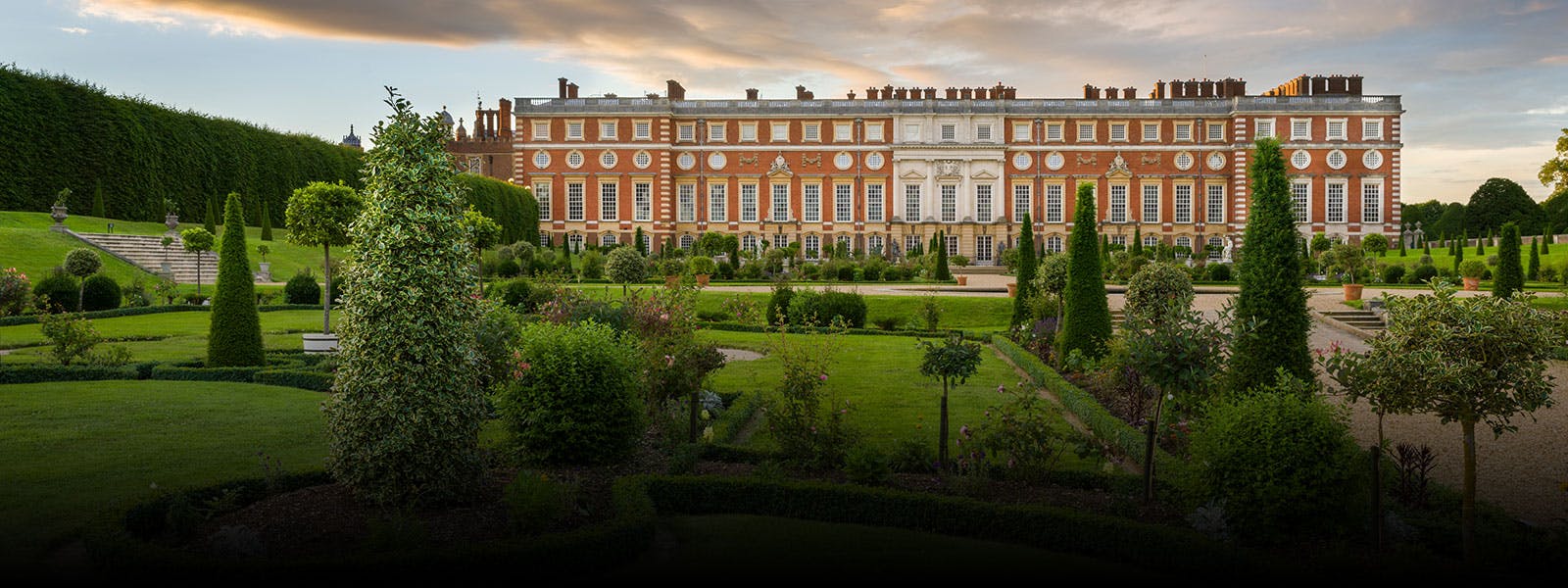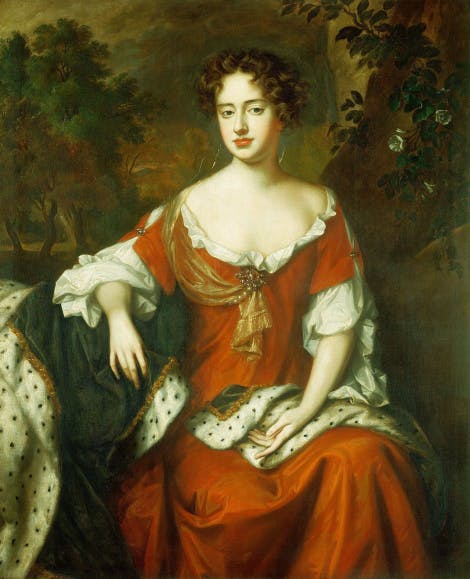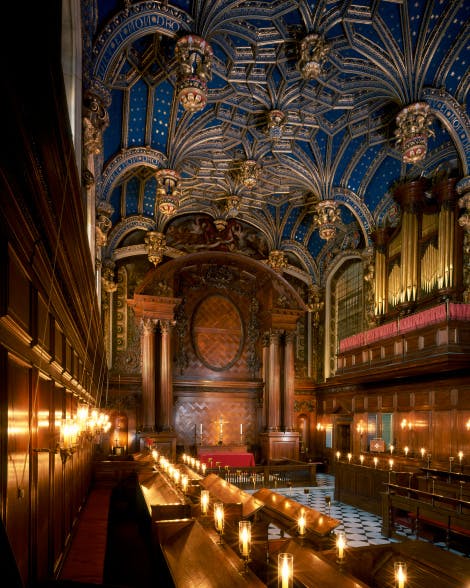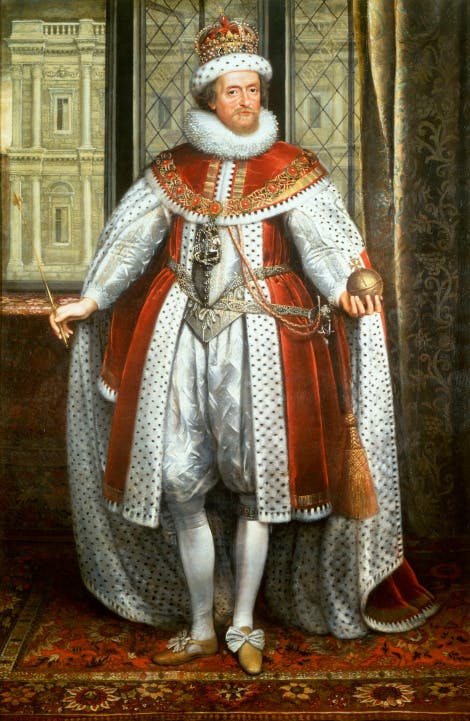
Find filming locations for The Favourite, learn more about the history behind the film and find out about Queen Anne's legacy at Hampton Court Palace.
The film
In early 18th century England, a frail Queen Anne (Olivia Colman) occupies the throne and her 'favourite' Sarah Churchill, Duchess of Marlborough (Rachel Weisz) uses her personal influence to govern the country in her stead.
When a new servant Abigail (Emma Stone) arrives at court, her charm endears her to Sarah. Sarah takes Abigail under her wing and Abigail sees a chance to gain favour with the Queen and rise through the social ranks.
As the politics of war become quite time consuming for Sarah, Abigail steps into the breach to fill in as the Queen's companion. Their burgeoning relationship gives Abigail a chance to fulfil her ambitions and she will not let woman, man, politics or rabbit stand in her way.
Filming at Hampton Court Palace
Hampton Court Palace was proud to welcome the film's cast and crew during the spring of 2017.
Key filming locations included Henry VIII's Kitchens, the Cartoon Gallery and Fountain Court, which are all open to the public and included in your day admission ticket to the palace.
The funds raised through our filming activities help to conserve these historic buildings, ensuring they are here for future generations to enjoy.
This content is hosted on YouTube
This content may be using cookies and other technologies for which we need your consent before loading. To view the content, you need to enable cookies for "Targeting Cookies & Other Technologies".
Manage CookiesTrailer for the film The Favourite.
Filming locations for The Favourite
Henry VIII's Kitchens
The Great Kitchens
The huge Great Kitchens date from the Tudor period and are the most impressive of Henry VIII's Kitchens. Originally they were used just for roasting fresh meat, mostly beef, on spits over the six great fires. In the last room of the Great Kitchens you can see a Tudor roasting fire in full glory.
Later additions to the rooms give us clues to the continued use of the kitchens in later periods. A range of charcoal stoves has been added, as has a small bread oven and a later roasting range. It was these historic kitchens which would have served Queen Anne's court when in residence at Hampton Court Palace.
Serving Place
At the end of the Great Kitchens is the Serving Place, where armies of servants would collect the finished dishes and carry them to the Great Hall and other chambers.
Visit Henry VIII's Kitchens

Take a look around Henry VIII's kitchens at Hampton Court Palace on our 360-degree image, created in partnership with Google Arts & Culture.

The Cartoon Gallery
The Cartoon Gallery was designed for William III — Queen Anne’s brother-in-law — by Sir Christopher Wren. It became one of the earliest purpose-built art galleries in Britain, home to Raphael's 'Acts of the Apostles'.
Still one of the greatest treasures in the Royal Collection, these 'cartoons' — designs for tapestries in the Sistine Chapel in Rome — are now on loan to the Victoria & Albert Museum in London. The paintings here today are copies produced in the late 17th century.
Visit William III's ApartmentsFountain Court
This is the palace's last great courtyard — built between 1689 and 1694 on the site of Henry VIII's apartments.
Behind its formal windows are two sets of royal apartments — one intended for the king, the other for the queen. Behind the upper windows were lodgings for leading servants and courtiers.
A carving of Hercules' lion skin is draped over each round window and underneath each arch are delicately carved flowers and royal symbols. Each is topped by the characterful head of a classical god or mythic creature.
Fountain Court
Take a look around the Fountain Court at Hampton Court Palace on our 360-degree image, created in partnership with Google Arts & Culture.
Queen Anne at Hampton Court Palace

Queen Anne spent time at Hampton Court Palace during her reign, and commissioned the leading artists and craftsmen of her day to make improvements.
Much of Hampton Court was in fact built just before she became queen in 1702. Anne's sister and brother-in-law, William III and Mary II, who ruled as joint monarchs from 1688, commissioned Sir Christopher Wren to create new baroque royal apartments to replace Henry VIII's ageing and unfashionable Tudor palace.
Anne visited Hampton Court during the reign of William and Mary. Her only son to survive infancy, Prince William, was born at the palace in 1689 (he died at Kensington Palace aged only 11).
Mary II succumbed to small pox in 1694 and when William III also died in 1702, the era of grand spending on Hampton Court ended, but Queen Anne did make significant changes to the Queen's Apartments and to the Chapel Royal. She returned to stay at the palace in 1710, 1711 and 1713.
The Queen's Drawing Room
When Mary II died in 1694, the new Queen's Apartments had been left unfinished. Queen Anne commissioned the painter Antonio Verrio to decorate the walls and ceiling of the Drawing Room in 1703.
As one of the most important rooms at the palace, centrally positioned on the East Front, this large imposing space became a grand statement of Anne's royal majesty and imperial power. On the ceiling, Verrio paints her as 'Divine Justice' crowned by Britannia and Neptune, god of the sea.
Around the walls are allusions to Britain's emerging empire and in particular her navy, under the guidance of Anne's husband, Prince George of Denmark as Lord High Admiral.


The Chapel Royal
In 1710, Queen Anne commissioned Sir Christopher Wren to remodel the Chapel Royal at Hampton Court.
Wren installed an oak reredos (altarpiece) at the east end of the Chapel, in front of the original lost window, which had been destroyed during the Commonwealth in the 17th century. Wren also added boxed-in pews, a new organ and a staircase leading down from the Royal Pew, where Verrio's successor as principal decorative painter, James Thornhill, added a ceiling.
Anne's changes can still be seen in the Chapel today.
Visit the Chapel Royal
Save time, book online
Walk in the footsteps of Queen Anne, William III and Henry VIII on your visit to Hampton Court Palace.
Explore what's on

- Things to see
William III's apartments
Enjoy the beautiful State Apartments and private rooms of William III at Hampton Court Palace as part of your visit.
-
Open
- In line with palace opening hours
- Hampton Court Palace
- Included in palace admission (Members go free)

- Things to see
Hampton Court Gardens
Take time to explore and relax in these world-renowned gardens and find our free entry Garden Open Days dates.
- Open
- In line with palace opening hours
- Hampton Court Palace
- Included in palace admission (Members go free)

- Tours and talks
Audio Guide Tour
Explore the palace as a film set with our Film and TV Location tour. Hold the stories of Hampton Court Palace in your hands with an audio guide tour.
- Available
- Hampton Court Palace
- Included in palace admission (Members go free)
Browse more history and stories

Queen Anne
A surprisingly successful monarch, despite ill health and tragedy

The story of Hampton Court Palace
Home of Henry VIII and the Tudor dynasty

James I and Anne of Denmark
Generous, scholarly James and his cultured wife
